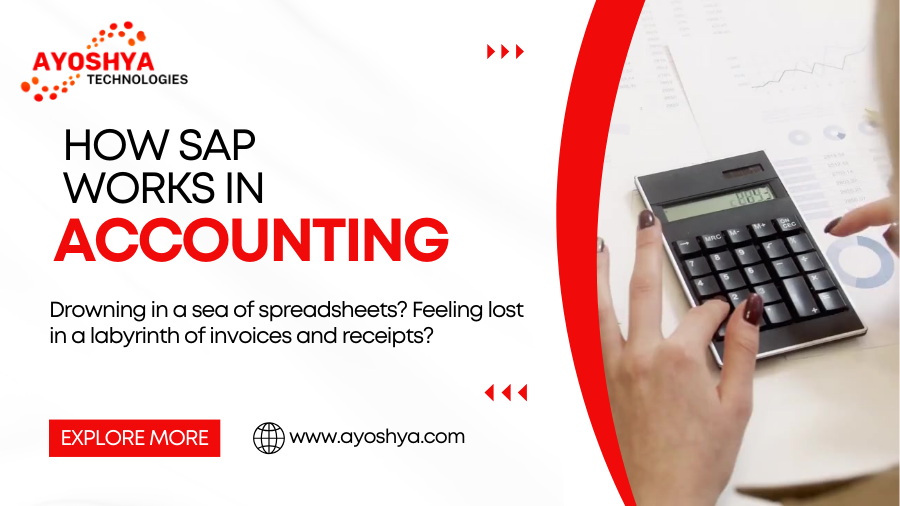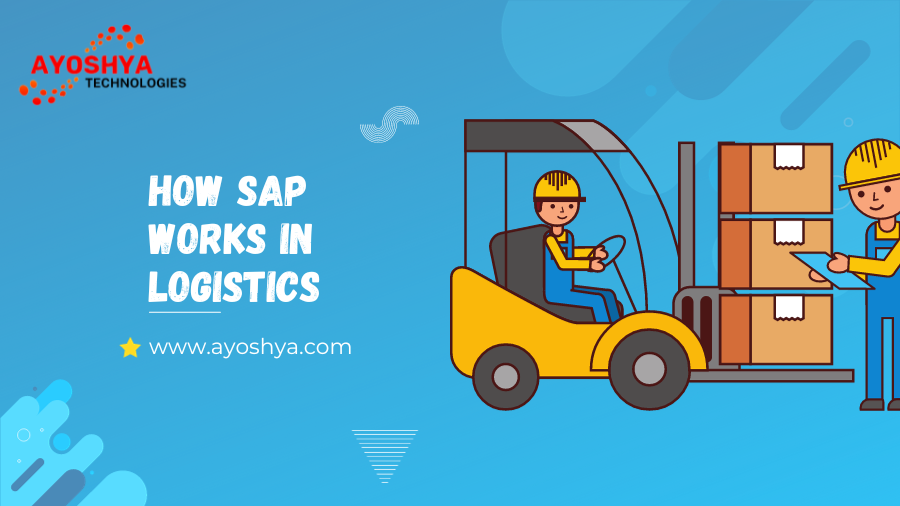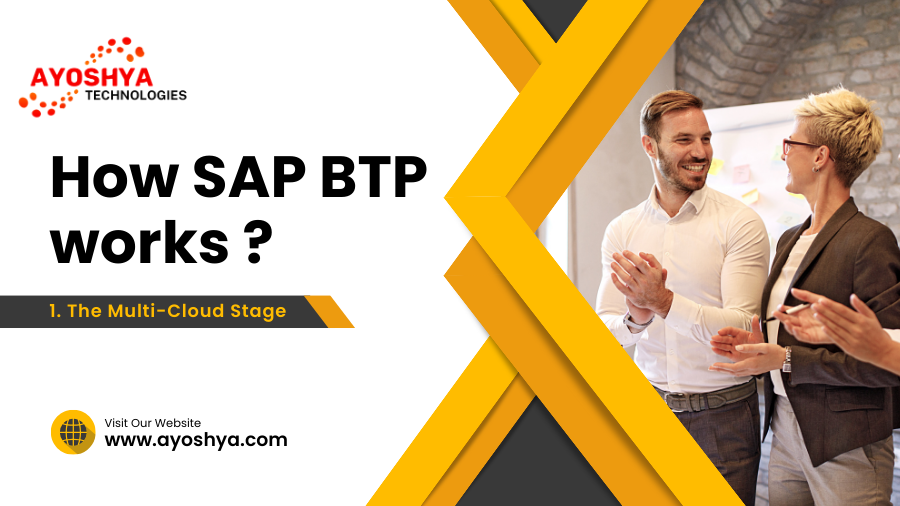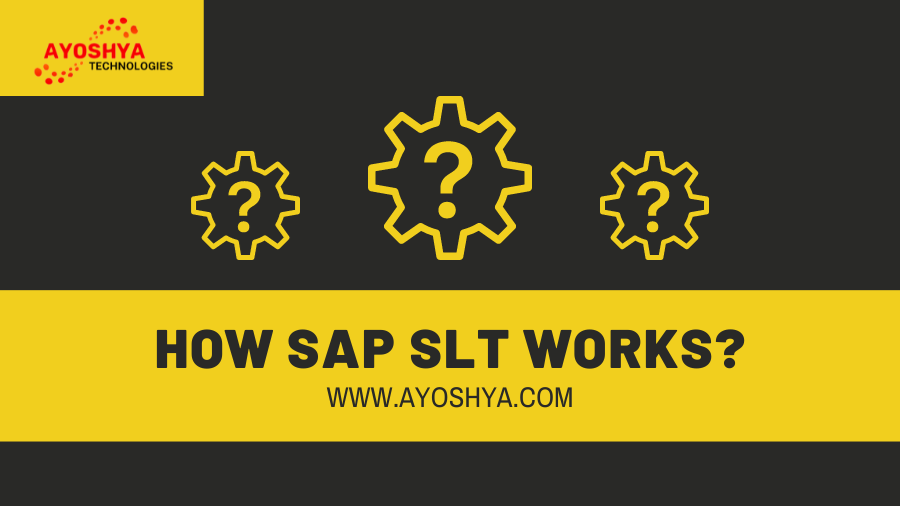How sap hana works? Imagine this: You’re a business leader, staring at a dashboard frozen in time – yesterday’s data, yesterday’s insights, yesterday’s decisions. Paralyzed by uncertainty, you yearn to peek into tomorrow, to anticipate the market shift, the customer churn, the golden opportunity before it vanishes like desert mirage.
Enter SAP HANA, the in-memory powerhouse that shatters the time barrier, catapulting you from data dinosaur to real-time visionary. No more lagging reports, no more gut-wrenching guesses. Just pure, unadulterated business magic – the power to see, analyze, and react to your world in the very moment it unfolds.
Curious? Read on, and brace yourself for a paradigm shift. We’re about to dissect SAP HANA, piece by revolutionary piece, revealing its secrets and unlocking its boundless potential for your business. From its in-memory engine thrumming like a hummingbird’s heart to its lightning-fast data manipulation, we’ll unveil the tools that transform every decision from a cautious gamble to a calculated leap of faith.
So buckle up, data explorer. Your journey to the real-time revolution starts now.
SAP HANA vs SAP S/4 HANA
What is SAP HANA?
At its core, SAP HANA isn’t just a fancy acronym – it’s a seismic shift in how we interact with data. Gone are the days of sluggish disk-based databases, choked by latency and struggling to keep pace with the modern world’s rapid data flow. SAP HANA rewrites the rulebook, introducing a revolutionary concept: in-memory computing.
Imagine this: Instead of data languishing on slow, spinning disks, imagine it nestled comfortably in the lightning-fast embrace of RAM. That’s the magic of SAP HANA’s in-memory RDBMS – data lives right where it needs to be, readily accessible for swift retrieval and analysis. But this in-memory haven isn’t just a chaotic data dump; it’s a meticulously organized palace, thanks to two key architectural cornerstones:
1. Columnar Storage: Picture traditional databases storing data like cluttered bookshelves, with titles, authors, and publication dates all jumbled together. Columnar storage in SAP HANA flips the script, neatly aligning like library stacks – each column (e.g., titles, authors) occupies its own dedicated shelf. This laser-focused organization cuts access times dramatically, allowing you to grab specific data elements with surgical precision, not waste cycles rummaging through irrelevant ones.
2. Parallel Processing: Think of traditional databases as single-lane highways, prone to bottlenecks. SAP HANA is a multi-lane freeway, harnessing the power of multiple cores and servers to process data simultaneously. Imagine running multiple analyses at once, generating reports while crunching financial numbers, all without the agonizing crawl of sequential processing. This parallel power unlocks unprecedented performance, transforming even the most complex tasks into blink-and-you’ll-miss-it computations.
In this revolutionary shift from disk-based lethargy to in-memory agility, lies the true magic of SAP HANA. It’s not just a database; it’s a gateway to a world where data dances to your tune, revealing its secrets in real-time, empowering you to make informed decisions in the very moment that matters most.
How SAP HANA works ?
how sap hana works? We’ve explored the architectural marvels of SAP HANA, but how does this futuristic engine actually hum? Let’s take a peek under the hood and witness the intricate dance of data in its natural habitat:
1. The In-Memory Stage: Imagine a vast theatre where data, instead of actors, takes center stage. In SAP HANA, RAM serves as this luminous stage, bathed in the spotlight of constant access. Every piece of information – customer records, financial transactions, inventory levels – resides here, readily available for the spotlight operator: your queries, analyses, and reports. This in-memory residency eliminates the sluggish curtain call of disk retrieval, allowing you to instantly interact with data, the star of the show.
2. Columnar Spotlight: But this isn’t a chaotic improv; data dances in neatly organized routines, thanks to columnar storage. Think of each data element – name, date, amount – as a skilled performer, assigned a dedicated lane on the stage. When you need specific information, like all customers from a particular region, the spotlight focuses on the “region” lane, ignoring the rest. This laser-targeted access eliminates time wasted sifting through irrelevant data, making your queries pirouette with lightning speed.
3. Parallel Processing Orchestra: Now, imagine this theatre isn’t a one-man show but a grand symphonic spectacle. Parallel processing in SAP HANA acts as the conductor, dividing tasks amongst multiple servers and cores, each analyzing data simultaneously. It’s like having an army of analysts working in perfect harmony, tackling complex queries like a well-rehearsed concerto. This multi-threaded magic ensures even the most data-intensive tasks – financial simulations, fraud detection – unfold in real-time, without a single missed beat.
4. Real-Time Revelations: Finally, remember the theatre’s audience? In SAP HANA, it’s your business decisions. With data dancing in real-time, you’re no longer a passive observer but an active participant. See a sales dip? Instantly adjust marketing campaigns. Spot a fraudulent transaction? Block it before it takes flight. SAP HANA transforms data into a live performance, revealing insights as they happen, empowering you to react with nimble grace and seize every opportunity.
how sap mdg works ?
Key Features and Benefits of SAP HANA
We’ve witnessed the inner workings of SAP HANA – the in-memory stage, the columnar spotlight, the parallel processing orchestra. Now, let’s explore the fruits of this technological marvel: the tangible benefits it delivers to your business.
1. Real-Time Revolution: Forget lagging reports and historical snapshots. SAP HANA transforms data into a live stream, revealing insights as they happen. Imagine monitoring inventory levels that update with every purchase, or analyzing customer sentiment during a social media campaign – all in real-time. This agility equips you to react instantaneously to market shifts, identify opportunities, and avoid potential pitfalls before they snowball.
2. Performance Unchained: Break free from the shackles of sluggish databases. SAP HANA’s in-memory processing and parallel execution make light work of even the most data-intensive tasks. Complex queries that once took hours now complete in seconds, reports materialize in a blink, and simulations run with the speed of thought. This newfound performance boost frees up your time and resources, allowing you to focus on strategic decisions instead of battling processing delays.
3. Simplified Data Landscape: Bid farewell to data silos and redundant information. SAP HANA centralizes and harmonizes your data, creating a single source of truth for all your departments. This eliminates inconsistencies, reduces administrative overhead, and fosters seamless collaboration across the organization. Imagine everyone singing from the same data hymn sheet, ensuring informed decisions based on accurate and unified information.
4. Enhanced Business Intelligence: Data isn’t just numbers anymore; it’s a crystal ball revealing the future. SAP HANA’s advanced analytics capabilities empower you to uncover hidden trends, predict customer behavior, and identify untapped market segments. Imagine diving into detailed demographics, spotting correlations between seemingly unrelated data points, and building predictive models that guide your business towards strategic success.
5. Personalized Customer Experiences: In today’s digital age, customers demand experiences tailored to their unique needs. SAP HANA empowers you to personalize marketing campaigns, recommend relevant products, and provide superior customer service – all based on real-time insights gleaned from individual data profiles. Imagine a world where every interaction feels like a one-on-one conversation, fostering loyalty and brand advocacy that sets you apart from the competition.
These are just a glimpse of the treasures unlocked by SAP HANA. This in-memory powerhouse isn’t just a database; it’s a game-changer, revolutionizing how businesses interact with data and extract value from it. So, ditch the dusty spreadsheets and embrace the real-time revolution – your business symphony awaits the conductor’s baton.
SAP HANA Training and Placement: A Complete Guide
Use Cases and Applications of SAP HANA
We’ve unlocked the treasure trove of SAP HANA’s features, but how does it translate to real-world scenarios? Let’s explore its diverse applications across various business functions:
1. Supply Chain Symphony: Imagine a factory floor dancing to the rhythm of real-time inventory updates. SAP HANA empowers you to track materials, shipments, and production processes in real-time, optimizing logistics, preventing stockouts, and anticipating maintenance needs. This data-driven agility ensures a smooth supply chain symphony, where every note rings true with efficiency and cost-savings.
2. CRM’s Crystal Ball: Predict customer churn before it becomes a lost melody. SAP HANA analyzes social media sentiment, purchase history, and website interactions, revealing real-time customer insights. This crystal ball empowers your CRM team to personalize marketing campaigns, offer targeted promotions, and proactively resolve customer issues. Every interaction becomes a harmonious note, strengthening customer loyalty and boosting lifetime value.
3. Fraud Detection’s Fast Fiddle: Imagine financial transactions like dancers, some graceful, some suspicious. SAP HANA analyzes transactions in real-time, spotting anomalies and identifying fraudulent activity before it hits the wrong note. This fraud detection fast fiddle protects your business from financial losses and safeguards sensitive data, ensuring a secure and harmonious financial performance.
4. Reporting Revolution: Ditch the chorus of “where’s the data?” reports. SAP HANA generates dynamic reports and dashboards instantly, offering real-time insights into sales, marketing, and financials. This reporting revolution empowers every department to make data-driven decisions, optimize resources, and track progress towards goals – all on the same rhythmic beat.
5. HR’s Harmonious Workforce: Imagine employee data dancing in perfect pitch. SAP HANA centralizes personnel records, performance reviews, and training data, providing real-time insights to manage your workforce effectively. Identify skill gaps, optimize training programs, and track employee engagement – all to create a harmonious and productive work environment.
These are just a few melodies played on the vast instrument of SAP HANA. From optimizing supply chains to predicting customer behavior, its applications span across departments and industries, transforming businesses into data-driven orchestras. Ready to compose your own success story? Start exploring the boundless potential of SAP HANA and watch your business performance reach symphonic heights.
Challenges and Considerations
While how sap hana works power is undeniable, integrating it into your business symphony requires careful consideration. Here are some potential challenges and considerations to ensure a harmonious performance:
1. Hardware and Software: SAP HANA demands robust hardware to handle the in-memory computations. Upgrading servers, storage, and network infrastructure might be necessary, requiring careful planning and investment. Additionally, ensuring software compatibility can be crucial, as older applications might need adjustments or upgrades.
2. Skilled Personnel: Conducting a data orchestra requires talented musicians. Implementing and managing SAP HANA effectively requires specialists with expertise in database administration, data modeling, and analytics. Investing in training your existing team or hiring skilled professionals is essential.
3. Migration Melodies: Moving existing data to SAP HANA can be a complex process. Choosing the right migration strategy, ensuring data integrity, and minimizing disruption to ongoing operations are all crucial considerations. Consider utilizing experienced data migration specialists to ensure a smooth transition.
4. Cost Considerations: While the long-term benefits of how sap hana works are significant, the initial investment in hardware, software, and personnel can be substantial. Analyzing the cost-benefit ratio and developing a clear ROI roadmap are crucial for justifying the investment.
5. Cultural Transformation: Embracing a data-driven culture is key to unlocking the full potential of SAP HANA. Breaking down data silos, promoting collaboration across departments, and fostering a data-centric decision-making mindset are all essential for success.
Despite these challenges, the rewards of tuning your data orchestra with SAP HANA are immense. With careful planning, investment, and commitment, you can unlock unprecedented agility, gain real-time insights, and transform your business into a data-driven powerhouse.
Remember, SAP HANA is not just a database; it’s a conductor waiting to unleash the symphony of your data. Embrace the challenges, tune your team, and prepare to witness your business performance reach operatic heights!
Future
how sap hana works isn’t just a present melody; it’s a captivating concerto brimming with future potential. The world of data is constantly evolving, and SAP HANA is poised to adapt and lead the charge with:
1. Cloud Symphony: Imagine SAP HANA dancing in the cloud, accessible from anywhere, anytime. Cloud deployment democratizes its power, making it accessible to businesses of all sizes and scaling it effortlessly with your needs. This removes hardware hurdles and streamlines maintenance, allowing you to focus on data-driven insights rather than IT infrastructure.
2. Machine Learning Harmony: As the data orchestra gets bigger, AI and machine learning will become essential conductors. SAP HANA is already integrating these technologies, enabling predictive analytics, automated insights, and intelligent decision-making. Imagine your data whispering future trends, suggesting optimal strategies, and guiding your path in a dynamic market.
3. Blockchain’s Secure Notes: In a world of interconnected data, security is paramount. SAP HANA is embracing blockchain technology, ensuring secure data provenance and tamper-proof transactions. Imagine a data exchange with notes of unwavering accuracy, building trust and fostering collaboration in an increasingly digital landscape.
4. The Internet of Things’ Grand Chorus: As physical and digital worlds merge, the Internet of Things (IoT) will add a chorus of new voices to the data orchestra. SAP HANA is ready to harmonize with connected devices, analyzing sensor data in real-time and revealing hidden patterns. Imagine optimizing production lines based on machine health, predicting equipment failures before they occur, and tailoring customer experiences based on real-time usage data.
5. The Human Connection: Don’t worry, humans won’t be replaced by data robots. SAP HANA is an instrument to empower us, not to replace us. Its power lies in enabling us to understand data better, make informed decisions faster, and connect with customers in more meaningful ways. Imagine a world where data illuminates human intuition, empowering us to create a symphony of success that transcends technology.
In future how sap hana works is as vast as the data universe itself. It’s a platform brimming with possibilities, ready to revolutionize how we interact with data and shape the future of our businesses. So, join the data orchestra, tune your instruments, and let SAP HANA conduct you to a future of unimaginable success.
As the curtain falls on this exploration of SAP HANA, remember: it’s not just a database upgrade, it’s a data revolution waiting to orchestrate your business success. From its in-memory stage where lightning-fast insights pirouette, to its columnar spotlight slicing through data with laser precision, SAP HANA rewrites the rules of engagement with information. Forget lagging reports and historical snapshots – embrace real-time revelations that empower you to react in the blink of an eye.
The benefits dance across every department: supply chains humming with real-time inventory updates, CRM teams predicting customer churn before it becomes a lost melody, and financial reports materializing like magic. Unlock the hidden melodies of your data, unveil trends with advanced analytics, and personalize customer experiences with laser-targeted precision. It’s not just about efficiency, it’s about transformation – a data-driven metamorphosis that sets you apart in the symphony of your industry.
But this masterpiece needs your baton. Embrace the challenges, tune your instruments (hardware, software, and your team!), and foster a culture where data whispers wisdom in every ear. Remember, how sap hana works empowers humans, not replaces them. Let your intuition soar on the wings of real-time insights, forge stronger customer connections, and write a data-driven success story that resonates for generations to come.
So, step onto the data stage, conductor, and raise your baton. The SAP HANA symphony awaits – the only question is, are you ready to lead it?












